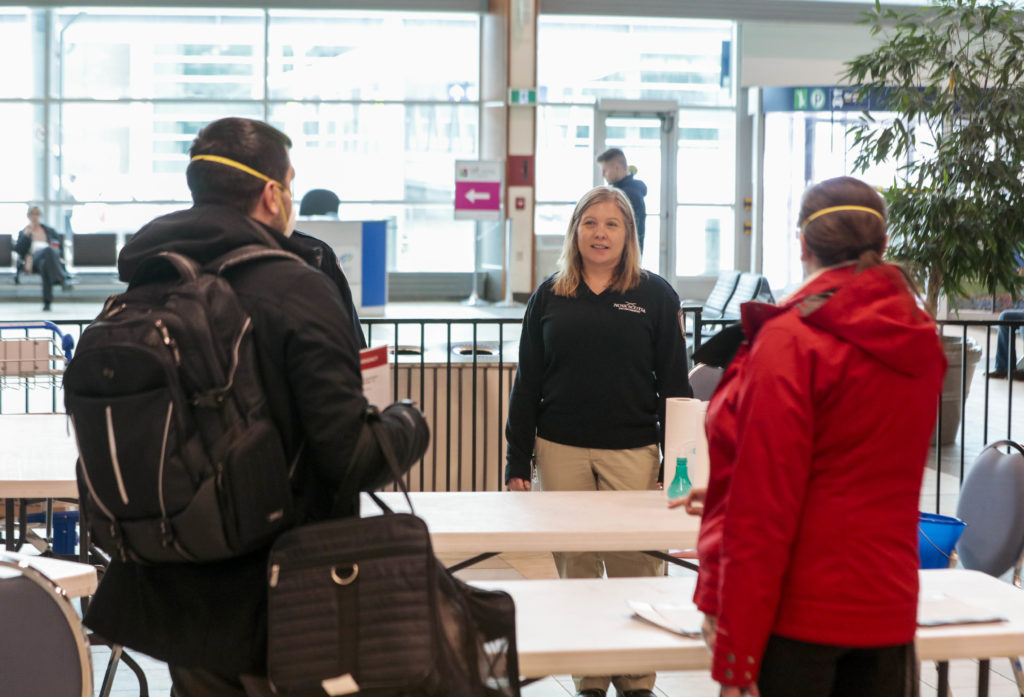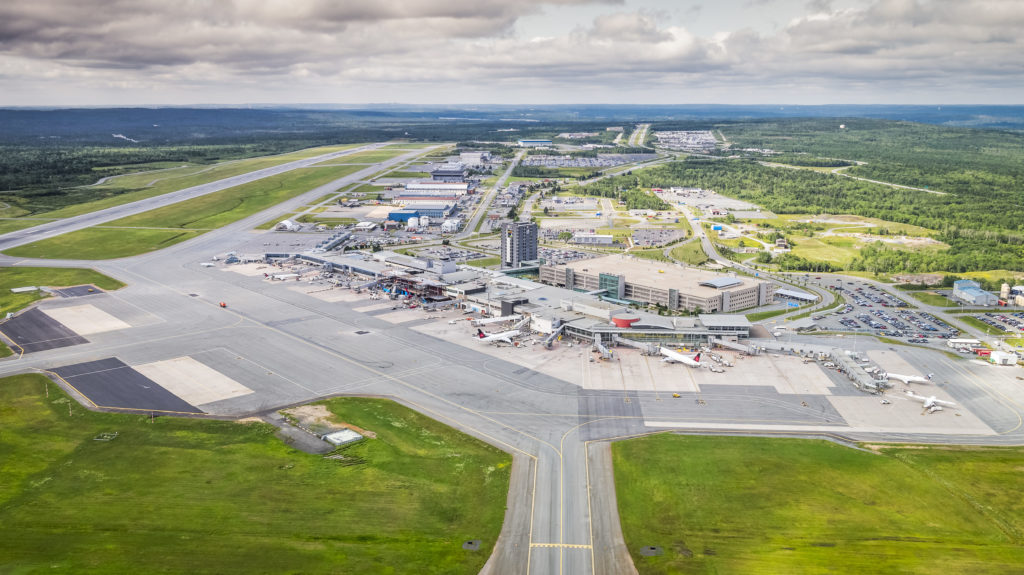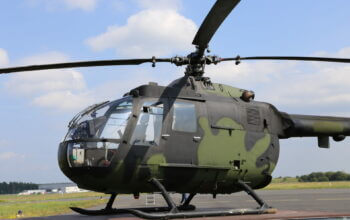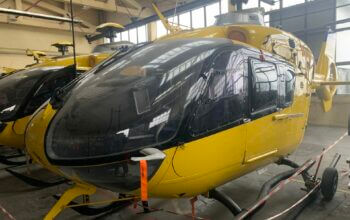Estimated reading time 7 minutes, 12 seconds.
Airlines are not the only ones scrambling to deal with the COVID-19 pandemic. Airports are also struggling to come to grips with drastically declining passenger numbers and a corresponding drop in revenue.

According to the Canadian Airports Council (CAC), commercial airports in this country are now expected to incur total potential losses between $1.8 and $2.2 billion in 2020.
Between March and June, overall passenger traffic volume is expected to decrease by 55 to 71 per cent as governments restrict travel and airlines respond by cancelling flights and grounding aircraft.
“Things have changed quite dramatically over the past two weeks for airports, as it has for the airline industry,” said Joyce Carter, president and CEO of Halifax International Airport Authority (HIAA) and chair of the CAC.
She said airports have enhanced their focus on the health and safety of passengers, employees and others who use the facility. As repatriation efforts continue to bring Canadians home, Carter said collaboration is evident across the aviation network.
“We’re an industry that is quite nimble and you would have seen this as we have responded to developing events. While the biggest challenge is of course the financial aspect, we have always been a group that can work collaboratively in these types of circumstances.”

Carter believes there are positive lessons to be learned from the COVID-19 crisis, and she and her team at Halifax Stanfield International Airport are trying to use the experience to inform future operations.
“A big positive for us comes in the form of our business continuity and pandemic plans,” she said. “This has upped our game for our work from home program. We were early out of the gate to initiate remote work on March 13. Our IT department stepped up to the plate big time to ensure those who needed to work from home had the necessary equipment.”
Of HIAA’s 215 employees, 60 per cent are now regularly working from home, including Carter herself.
She said the team has come together to accommodate personal challenges employees have faced, such as child care, with schools and public institutions closed.
“I can see that when we come out the other side of this we will be much more efficient.”
Another early initiative at the airport saw provincial health officials stationed throughout the facility as of 6 a.m. on March 16.
“That was a decision they (the province) made over the previous weekend because it was the start of March Break. They wanted to catch those travellers to let them know what they may see when they returned. We kicked into action early, had their officers in our facility around the clock to hand out information to international and domestic passengers. Any space we had available for signs anywhere we gave up to them – static signs, the PA system. That is a really positive example of collaboration.”
Carter sees additional short- and long-term opportunities.
“From the immediate side, we are seeing consolidation of the operational side of the business. When you think about a terminal building, it operates in a certain way. If you step back and those operations are reduced to the extent where you can still ensure public safety and person-to-person distancing, there are things you can do in your business that you might not be able to do in a normal functioning environment.”

One example is HIAA’s decision to centralize its gate operations so airport activity is concentrated in one area.
“We want to keep the positive parts of that ongoing when we return to full operations,” said Carter. “For example, when you think about how gate assignments are set at airports, it might not be the most efficient at the end of the day. There may be ways to consolidate operations that make things better for the carriers, passengers and ourselves.”
Another silver lining has appeared in the air cargo sector at Halifax, as the demand for live seafood shipments to Asia begins to rebound.
“Cargo was impacted early for us,” explained Carter. “One of our largest exports is live lobster to China. In January, one of the first services that pulled back for us was the cargo flights to China. We are now starting to come out on the other side of that. Flights to Asia are starting to pick up again.”
HIAA is currently working on its 20-year master plan and lessons from the COVID-19 pandemic will definitely help inform that initiative.
While the CAC has urged the federal government to provide airports with short-term rent relief and a longer-term stimulus package, Carter said a formal reply has not yet been received.
“We very much look forward to an announcement from the federal government in the days ahead.”
While airports across the country are struggling to cope with declining revenues, COVID-19-related costs are increasing as new containment strategies must be implemented. But Carter encouraged airport operators to look ahead to the inevitable recovery.
“In these times of challenge, people are tested,” she concluded. “But there are always really positive things that come out of it. As airports, we are significant economic generators in our community and right now, we’re in the middle of a crisis. We should be looking to the rebound and thinking about how we can play a positive role in the future with trade and tourism.”
“Of course there is a huge financial impact, but airports will stay the course. We are here for the long term. Let’s stay positive.”
Canadian airports: Do you have a positive story to share about how your facility is responding to the COVID-19 crisis? Email us at news@skiesmag.com.








